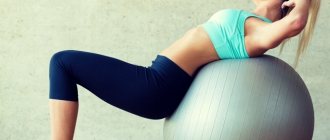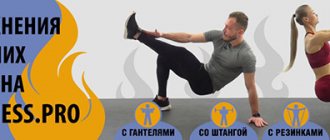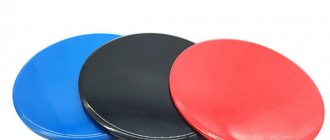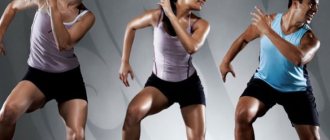Why did you stop, new guy? It's only the twenty-sixth kilometer of the race! Come on, two hundred push-ups without a break!
Lights out, warriors, and in five hours - like a cucumber!
What-oh? Does the soup have more bones than meat? We feed you so that you don’t die, you snotty princess! The outhouse outfit is out of turn!
Oh yeah, and that's not the worst part of Spartan training.
. These can be practiced in the professional army (and all sorts of paramilitary departments), orders of fighting monks and hunters of evil spirits, as well as some sports.
The main difference between the subject and the stupid drill and sadism of commanders is that thanks to Spartan training, fighters actually become strong, resilient, and brave. And then, perhaps, they will thank their stern coach.
Codifier and tropnamer - the real state of affairs in ancient Greek Sparta. Boys were taught martial arts from a young age, subjected to grueling training, and punished for the slightest offense. They were also allowed to rob civilians, as long as they didn’t get caught (then they were punished again... for sluggishness).
"Evil Twin" trope - Inhumane training. However, the phenomena may overlap...
LESSONS
“The obsessive, blind, maximalist approach that I followed before filming was good only for Leonid himself - he knew that he had no future. But this method only works for very short periods of life.”
, says Butler.
Today Gerard clearly controls his lifestyle. After eight months of rest, he returned to the gym. Now he works out four times a week and has a more balanced approach to fitness. He acts a lot and often in action, with virtually no stunt doubles - for which he received an award from the World Stunt Organization. And the experience gained in “300 Spartans” helps him even now, in particular with regard to proper nutrition. He eats a lot of vegetables and chicken, and has forgotten about hamburgers and other nonsense.
Spartan diet
As it was:
boys in Sparta were kept half-starved. It was believed that fasting would make the muscles of the body dry and functional. The favorite dish of the warriors was the so-called. “black soup”: broth made from pork feet, pork blood and lentils. Plutarch writes: “The old people refused meat, giving it to the young, and they themselves poured out their own food, stew. They say that one Pontic king bought himself a Spartan cook solely to prepare “black stew,” but when he tried it, he spat it out in disgust and became terribly angry.”
How to adapt:
The paleo diet (or “caveman diet”) is a fashionable trend in fitness today. Its essence is that the first people did not yet know how to cook cereals, bake bread, or make sugar (by the way, they had already learned how to do this in antiquity) - they ate exclusively meat, fruits and vegetables. All this, according to adherents of the paleo diet, nourishes the human body much better than modern semi-finished products, dough and artificial additives.
Boxing Spartans
As it was
: Plutarch writes: teachers in Sparta encouraged fights between young students. It was believed that fist fighting was excellent preparation for future wars. The rules of fights were often determined in advance: until there was blood, before falling to the ground. Fist fights attracted many spectators.
In the 7th century BC. fist fights and pankration (a symbiosis of boxing and wrestling) were introduced into the Olympic Games. The athletes fought naked. Boxers wrapped leather belts around their hands, but in pankration they did without them. Legends tell: a certain Greek Arraheon won pankration twice at the Olympic Games, and in the third final he died, strangled by his opponent. However, the victory was still given to him again. Arracheon, already dead, grabbed his opponent’s leg so tightly that he could not stand it and asked to stop the fight.
The philosopher Plato is also considered a champion in martial arts: he was the personification of the ancient Greek principle “develop your body and mind.” In Sparta, in addition to male pankration, female pankration was also practiced. The judge watching the fight was armed with a stick to separate the Spartans.
How to adapt
: pankration is the prototype of modern MMA (mixed martial arts). Incorporate at least two MMA workouts per week into your training plan. They will bring you closer to the ideal warrior of ancient Sparta.
Spartan training
The actor says that a four-month program was developed specifically for “300 Spartans.” It was compiled by Michael Twight. The entire program consists of 300 repetitions and resembles circuit training. There are no breaks between exercises. It was necessary to do 1-3 cycles. It took Gerard 19 minutes to complete 1 cycle. The program has become widespread.
The essence of the “300” program:
- Pull-ups on the horizontal bar with a wide grip - repeat 25 times.
- Deadlift weighing 50 kg - repeat 50 times.
- Do push-ups from the floor – 50 times.
- Jump onto a 60-centimeter platform – 50 times.
- Raising the legs to pump up the abdominal muscles from a lying position – 50 times.
- Push and push 16 kg weights - 25 times with each hand.
- Repeat pull-ups on the horizontal bar with a wide grip – 25 times.
Gerard Butler on the rings
About the film
The events of the film tell about the bloody battle of Thermopylae in 480 BC, in which three hundred brave Spartans, led by their king Leonidas, blocked the path of the thousands-strong army of the Persian king Xerxes.
Despite the numerical superiority of the Persians, the Spartans continued their stubborn defense, showing courage and bravery. Their fearlessness and heroism inspired all of Greece to unite against an invincible enemy, thereby turning the tide of the Greco-Persian Wars...
KinoPoisk 7.6 162 444 Awards 3 Saturn, MTV Channel Award, Georges
Quotes from the media
Film.ru / Empire Rita Rusakova
• March 21, 2007 “300 Spartans,” despite all its production unreliability, turned out to be a very impressive movie. Poster
Stanislav Zelvensky
• March 15, 2007 If it occurs to anyone to evaluate films by testosterone concentration, the figure 300 should be taken as a conventional unit, the gold standard , - and most of the action films shot so far will reach a maximum of 100. Here they don’t talk - but growl, don’t kill - but tear, don’t die - but... Time Out
Vasily Stepanov
• March 8, 2007By and large, “300” is not a traditional movie, but rather a grandiose fresco from the temple of war or even battle porn. The spectacle is mesmerizing and cannot be evaluated by the American Film Academy
FactsAll
1
To physically prepare the actors for the demanding, cutthroat action sequences, Snyder enlisted the help of two professionals with whom he had previously worked for many years: Mark Twight, a former world record holder in rock climbing, who would train the actors and stuntmen and monitor their fitness, and veteran stunt coordinator Damon Caro, who needed to prepare them for the action scenes.
2
To make the Spartan army visually different from the Persian army, the Spartans were dressed in bright, warm, “earthly” tones, while the Persians wore peacock colors, exotic greens, blues and purples with a golden tint.
3
Xerxes' elaborate costume, made almost entirely of metal, was based on an illustration taken from Miller's graphic novel. Wilkinson's costume design for Xerxes can rightfully be considered the most complex in the entire film. “His costume is made up of eighteen different pieces of jewelry, each with dozens of African and Middle Eastern beads, beads and embroidered jewelry, plus twelve piercings to complete the look of this particular character.”
The essence of life in the Spartan community
Sparta strove for closure. Its rulers did not want its residents to adopt the culture and traditions of ordinary Athenians. This happened when the helots rebelled in Sparta. Athens sent several hundred soldiers to help suppress the uprising, but the Spartans deployed battalions, citing their laws. Scientists believe that the Spartans did not want the spread of universal Greek values among the population of a separate polis.
By the way, representatives of the fair sex had the greatest freedom in Sparta. Women were allowed to learn whatever they wanted:
- Sciences
- Reading.
- Letter.
- Rhetoric.
Ladies were even allowed to express their opinions regarding political views, enter into disputes on any topic and be the center of attention regarding cultural and sporting achievements. Among men, such freedoms were enjoyed by people who achieved high victories and climbed the hierarchical ladder to the very top.
Those who chickened out in battle were declared unfit by the Spartans. Their genes were considered worthless and flawed. Therefore, the children of such a warrior did not have the right to marry. If this warrior was seen wanting to give his life in battle, the outcast status was removed and the warrior was given the opportunity to prove himself.
No Spartan had to fear death. Spartan society cannot be called ideal, but their courage and courage have no equal. Many of the warriors risked their lives and gained glory. Others chose to keep what they had, but lived in shame and persecution.
There were also defeats
The Spartans, who were considered virtually invincible, actually had flaws in military affairs and there were battles in which brave men were defeated. The most famous of them was the battle during the Peloponnesian War. This epic lasted many decades, the Spartans fought with the Athenians.
Historians talk about a battle in 425 on the small island of Sphacteria. The Spartans found themselves isolated while the Athenian warriors attacked, surrounding the majestic army. As a result, the Spartans laid down their arms and showed the enemy a white flag.
There was also a detachment that could fight the Spartans on equal terms and partially surpass them in strength. These are the people of Thebes. They had about 300 super-soldiers, who were trained with no less passion than the Spartans. These fighters caused the Spartans to be defeated three times.
Thebes defeated the Spartans by cunning. For example, during the height of the offensive, a rest was declared, and when the Spartans retreated, the Thebans suddenly attacked. This was the battle in 378. By the way, the Thebans were always numerically inferior to the Spartans. In the battle of Tegira, the Spartans were twice as numerous, but the Thebans advanced so boldly that the enemy even decided to give them the opportunity to retreat and opened a passage for this. As a result, the Thebans attacked at the most crucial moment, from within.
And another example, the Battle of Leucra. There were several thousand Spartans, but only 6,000 Thebans. In the end, Thebes won. Their cavalry dealt with the Spartans with lightning speed.
Historians do not see this as a direct defeat in terms of power. The Spartans maintained a large army of slaves, in whose ranks conspiratorial sentiments were brewing. At the expense of traitors, the Spartans lost a number of battles.
So, the Spartans are the strongest, bravest, militant caste that existed in Ancient Greece. Ancient warriors created a perfect state in which only the laws of war were in force.
- Homer's Iliad
"The Iliad" is a poem about war. The poem is called “The Iliad” in honor of Ilion (i.e. Troy), the city where the events described in the poem take place. In the 12th century BC, Greek tribes captured and burned Troy, a powerful city located on the Asian shore of the Hellespont. The theme of the Iliad is Achilles' "wrath" against Agamemnon and its terrible consequences. All events in the Iliad take place over 52 days; the poem consists of 15,537 verses, which form 24 songs
Paros Island. Greece
In the Mediterranean Sea, off the coast of Greece, there is a group of islands called the Cyclades. The island of Paros is just a couple of hours away by ferry. It should not be confused with the island of Pharos, on which the Alexandria Lighthouse was once built. In the archipelago of islands, Paros is the third largest.
Greek snacks (part four)
Greece is a real paradise for those who cannot imagine their life without meat. Greek chefs make the cooking process as simple as possible, so you can enjoy grilled or spit-roasted meat dishes. Try beef, pork, lamb and chicken. Basically, it is from this meat that dishes are prepared in ordinary taverns of Hellas. If you visit a tavern in a mountain village, here you can taste delicious wild boar meat and other, no less tasty, game.
Ancient city of Dion
Narrating about the divine love of Zeus for Fie, the daughter of the destroyer of the Greeks Deucalion, Geosid says that the girl became pregnant by the god and bore him two sons, Macedon and Magnet. They lived near Olympus in Pieria. The sacred site of Zeus in these lands was Dion in the foothills of Olympus. Ancient Dion, it was first mentioned by the ancient Greek historian Thucydides, when describing the route of the campaign of the Spartan commander Brasidas, through Thessaly, to the country of his ally, King Perdicus 2. This was the first city that Brasidas met on the way, crossing the border in the summer of 424 BC n. e.
Ancient Greek architectural orders.
Herodotus wrote: in 480 BC, 300 Spartans (although there were about seven thousand soldiers with them from all over Greece) repelled the 250,000-strong army of the Persian king Xerxes. The Spartans spent their entire lives forging steel from their bodies: they exhausted themselves by running, starving, lifting, heavy lifting and fighting. This made them perhaps the most trained warriors of the ancient world.
Biography of Gerard Butler
The actor was born in Glasgow (Scotland) on November 13, 1969. Born and raised far from being in an acting family, his father was an accountant who dreamed of building his own business. When Butler was 6 months old, his father decided to make his dream come true and moved his entire family to Montreal (Canada). Having moved to Montreal, he cherished the hope of starting his own business after repeated attempts ended in failure, and buried the meta forever, blaming his wife and children for everything, even little Butler, who was not even a year old. This was the last straw of patience for Margaret Butler (that was the name of Gerard’s mother), after which she filed for divorce.
Gerard was not the only child in the family; he had an older brother, Brown, and also an older sister, Lynn. When Butler Jr. was two years old, his mother took him, his older sister and brother and returned back to Scotland to a town called Paisley, where she was born, where the actor spent his entire childhood. Some time after returning to Paisley, Margaret marries again. In his youth, Butler Jr. was seriously interested in cards, a good foundation for the future star of the Hollywood Olympus. He practiced karate so seriously that he could have become a champion in his city, but, alas, or perhaps fortunately, this did not happen, and his second passion, cinema, prevented him.
The Butler house was located next to a movie theater, where he enjoyed going with his mother from time to time. These trips to the cinema became the beginning of the birth of a future Hollywood star. After some time and much persuasion from his mother to take him to audition for the theater, he managed to get to several auditions, and was accepted into the Scottish Youth Theater, and at the age of 12 he played his first role at the Royal Theater of Glasgow, although the role then belonged to it was small. But his mother was not happy with his hobby and constantly talked about him getting a normal profession.
Despite his passion for theater, he studied well at school, and after graduation, so as not to upset his mother, he entered the Faculty of Law at Glasgow College. In college, just as in school, he studied well, not just well, but was one of the best students, he even managed to become president of the student law society. After graduating from university, he hurried to go to Los Angeles and gain acting fame, but, alas. All he achieved in a year and a half of film testing was a small role as an extra in the film “The Bodyguard.” We all remember this picture, starring Kevin Costner and Whitney Houston. But hardly anyone remembered Gerard Butler in this film. It was during this period that the hardest thing happened for Gerard; he learned that his father was terminally ill. He suffered from cancer, Gerard hurried to Canada to visit his father, where he buried him, and after that he no longer thought about cinema, but returned to his homeland in Scotland. He got a two-year internship at a major law firm, where he met a man named Alan Stewart, who would play an important role in his life.
Despite her success at work, she did not bring him joy. He was depressed by the routine of everyday life, going to work from 9:00 to 17:00, and depression began. Even his participation in the rock band Speed, which he organized together with Alan, did not save him. His depression drove him into binge drinking, which ruined his career; he was unable to complete his internship and was fired two weeks before the end. His addiction to alcohol not only ruined his career, but almost ruined his life. One day he woke up on the roof of a skyscraper; his friend Alan prevented him from taking the last step into the abyss. He was inspired to return to acting by the play Trainspotting at the Fringe Festival in Edinburgh, and just two weeks after his dismissal, he went to London in search of the key to the door to the film industry. But even in London he was disappointed.
Before Butler took on his first acting role, he managed to work as both a waiter and a demonstrator of wind-up toys; in general, he changed professions and only in 1997 he made his film debut. By the way, before his debut, he played the main role in the play “Trainspotting,” which he watched with admiration from the auditorium in Edinburgh (Scotland).
Preparing for filming in the film “300 Spartans”
According to information from various sources, the preparation of the actors took 8 weeks. According to Butler, this is not so; he personally prepared, as he assures, for 7 months. The actor says that these 7 months were the most difficult for him in his career and that after 28 weeks he found exactly the shape that he showed on the screen. As for the shape of the other actors, there is no official information, but the screen showed that they were all trained and had enviable body proportions.
The most difficult thing for Butler, according to him, was training, although he had maintained relatively good shape before, but he did not have to train as suggested. But getting used to the image of the main character and conveying the entire emotional component was not particularly difficult for him, because he is a Scot, whose ancestors fought for freedom no less than the Spartans and, as the actor says, there was a sense of the spirit of war in him. You've probably watched this film and you can see on the screen that the actors and Butler himself gave their all on the set.
After the release of the film, there were rumors online that after the filming of the film, the abs that were cherished by many were drawn on the computer, and sometimes those who were carried very far appeared, they claimed that the actors’ abs were false. Grimm was indeed used, but only to visually emphasize the already clearly visible relief on the stomach. The budget of the film was 65 million dollars, what sane director would spend money from the budget of a film to create a non-existent press, more than one, of course, this is not true. Everything we saw on the screen was created live; no one drew anything with graphics.
The actors trained hard, sat on a low-carbohydrate, high-protein diet, add the right lighting, makeup, and here you have the whole recipe for the impressive relief of Spartan bodies, and of course, pump. It's no secret that before each take, actors pump their muscles with blood so that they appear larger and have a good venous pattern.
THE WAY OF THE BODY
Over the course of filming, training with Twight, pumping iron with Licastro and spending hours practicing sword, shield and spear techniques, Gerard Butler pushed beyond the imaginable adaptive limits of his 37-year-old body.
As a result, every joint and muscle in his body ached unbearably throughout the days and nights of filming. In short, Butler was overtaken by overtraining - a condition in which physical stress exceeds the body's ability to adapt and prevents its recovery resources from working. Gerard's health deteriorated so much that after filming ended, he had to give up training as hard as he started it. Butler postponed any physical activity for exactly eight months.
Losing muscle mass and inevitably becoming fat, the reflective Gerard blamed his own temperament and personality type. People of his type are incredibly addicted people; they are capable of getting stuck in any difficult situation for many years, be it work, collecting wooden elephants, sports or drugs. It was in the latter that Butler was by no means an angel. Of course, he didn’t bring syringes with prohibited contents to filming, but he still couldn’t get rid of his long-standing habit of smoking a pack a day. Concerned about his health after filming and clearly understanding that these cancer-carrying smoking sticks are no less deadly than the swords of Xerxes’ elite guard, Butler even underwent psychotherapeutic treatment to help reduce stress. As a result, he quit smoking, and this was the first step towards his former form.
Origin of the Training Zone[edit | edit code]
Prisoners around the world still practice the principles of old school progressive gymnastics. Throughout my time in prison, I was obsessed with the idea of physical strength, which somewhat transformed over time, turning me into an adept at bodyweight training. It was only a few years later that I began to understand the true nature and value of such training. It was years before I mastered all the secrets of the old school and realized the role that prisons played in preserving this art.
At one time, I read all about training, various exercises and techniques for building strength without the use of special equipment. Additionally, I was able to watch hundreds of incredibly strong prisoners training with their body weight like maniacs. Most of them had phenomenal abilities and truly Olympic forms, but in the social hierarchy they occupied one of the last places. I watched what they did and how they did it, talked with them about the nuances of the training process. These representatives of the previous generation told me about the strongmen they trained under during the second golden era of physical culture; These guys knew firsthand the previous generation of strongmen, their methods and exercises that they used in their training. Following their example, I, without sparing myself, trained day and night until I was completely exhausted and had bloody calluses on my hands. In addition, I also trained other inmates, honing my knowledge of bodyweight training.
Moreover, I set out to learn as much as possible about the old school of progressive gymnastics. After some time, I collected a large number of notes, ideas and descriptions of exercises for building titanic strength, developing agility and athletic form without equipment in a minimum time and with a minimum complexity of exercises.
Essentially, this system represents the best of the best. A system I call the Training Zone. And despite its name and origin, The Training Zone isn't just for prisoners—everyone can benefit from the techniques in this book on their path to strength, beauty, and physical health.
Running of the Spartans
How it happened: the Olympic Games once began with competitions in running one stage (192 meters), in which the inhabitants of Sparta more than once became winners. Then they introduced a double run (384 meters) - athletes ran a stage to the post, then turned and returned to the starting point
There was another long race of seven stages (1344 meters) and, finally, the most important competition - the race of hoplites, armed warriors (with a helmet and shield). Distance – 2 stages
It is believed that the Spartan shield weighed about 7 kilograms and reached a diameter of 60-80 centimeters. The base of the shield was made of wood, and the outside was lined with iron or bronze. The weight of a Spartan helmet is 1-2 kg, depending on the modification. The warriors of Sparta used "Corinthian" and "Attic" helmets. The first completely covered the face with cheekpieces, leaving only a slit for the eyes. The second ones were lighter and more open.
Running was considered the foundation of Spartan training. Hoplite foot soldiers were considered the elite of the army in Sparta, and cavalry and sailors were not respected. The ability to run fully armed made it possible to group, attack and retreat in battle.
How to adapt:
MMA fighters and crossfitters use running with a special sled instead of hoplite weights. The sled is loaded with disks from a barbell and pushed in front of you when running.
If you don’t have a sled, tie the discs from the barbell with a long rope to your belt. Run, dragging the discs behind you. Running with weights builds endurance, relief, and strength. Introduce it into your workouts 1-2 times a week and see how your body reacts. It will become leaner, “dryer”, and ordinary running will seem like easy fun after this.
The main stages that future warriors went through
The purpose of the Spartan camps, where slightly older boys were sent, was to raise strong, fearless, courageous warriors. This entire system in Ancient Sparta can be divided into three stages.
- Starting from the age of seven, boys went to special camps that had an initial military focus, where they were taught this skill. This was the first stage. Here children were taught minimal literacy (writing, reading), special attention was paid to the ability to listen to an interlocutor and succinctly express their thoughts. At this initial stage, the selection of the best also took place. This was done by creating artificial quarrels that led to fights between students. Raising children also involved stealing food. But this had to be done in such a way as to remain unnoticed. Those who failed to do this received punishment in the form of blows with rods. Every year the conditions in the camp became tougher and harsher. At the age of 14, children were subjected to difficult and painful physical tests. It was a kind of initiation into the Eirens. Until the age of 15, children were tested in Spartan units.
- From the age of 15 until the age of 20, young boys were taught not only literacy, but also the basics of music and singing.
But at the same time, education continued to become tougher. Food was obtained entirely by the students themselves. If for some reason they did not succeed, and the pupil remained hungry, he was severely punished with string. Often such bullying ended in the death of a young Spartan. But those who were able to achieve success in studies and military affairs were initiated into warriors by the age of 20 and given full weapons. - At the age of 20–30, already mature Spartans became full members of the military community, mastered several types of weapons perfectly, and showed themselves well in battle.
In a healthy body healthy mind
The Romans and ancient Greeks viewed training as a philosophical act rather than a physical one.
For them, this was part of a full-fledged education, “a healthy mind in a healthy body.”
The “palestras,” the ancient schools, taught the young not only exercises.
However, today fitness has nothing to do with brain function. And this is more like the Cartesian doctrine of the body as an unworthy appendage to the mind.
Recent research has already shown how physical activity and cognitive function are linked: for example, the secretion of endorphins during exercise affects mood and concentration. Exercise affects physical changes in the brain: the connection of nerve cells responsible for learning and memory increases, the speed of neurons increases, blood flow accelerates, and the volume of brain tissue increases.
Various studies have noted that physical activity, especially cardio, improves cognitive function in people of any age.
Periodization
Another reason why people stagnate in the gym is the lack of any measurable goal.
Something is better than nothing, right?
Not true.
It is very important to decide what you are working on and organize your routine accordingly.
The ancient Greeks developed their own system. Philostratus, a Greek sage living during the Roman Empire, described it in his work on gymnastics.
The “quaternary system” is a cycle of four days, each of which is dedicated to its own activity. The first day prepares the athlete, the second is full-body training, the third is rest, the fourth is work at an average pace and with an average load. On the first day, the exercises are short, intense, which prepares the athlete's body for the second day. The second intense day will take all the athlete’s strength. The third day will direct his energy in the right direction, and on the last day the athlete will train his stance and hold his opponent.”
This approach was tested in the Roman gladiatorial schools and is consistent with modern principles of periodization.
In simple terms, periodization is structuring your training to optimize it towards a specific goal.
For example, if your breasts are “sagging,” periodize your workouts.
All the most famous trainings include elements of periodization.
Get organized already!
Gerard Butler's Spartan Workout
Gerard Butler tried a variety of unusual exercises to gain a terrifying amount of muscle mass and destroy any trace of fat in the body. Gerard made three major changes in his life while preparing for the film: his diet, his training and his mentality. Yes, you need to not only eat and train like a warrior, but also think like a warrior.
Gerard Butler needed to cope with this monumental task in the shortest possible time. For this purpose, Mark Twight was invited, a famous American climber and author of legendary books and articles about extreme ascents, who argued that you need to train as if your life depended on it. In addition, Gerard kept a personal fitness trainer close to him. After strength training, Gerard Butler learned to wield a sword and spear, practiced tricks and fight choreography. He trained 6 hours a day for 4 months. Gerard dedicated part of his life to achieving the required physique for this role and ultimately delivered amazing results.
Instead of following a program aimed at pumping up specific muscle groups, Gerard Butler performed exercises that literally “knocked the crap out of him.” Flipping a huge tire, doing exercises on gymnastic rings and other unconventional exercises pumped his entire body and constantly stimulated his muscles to grow and develop.
To look like a warrior, you must train like a warrior. The following is the famous Spartan training program, in which you need to complete 3 hundred repetitions of various exercises as quickly as possible.
- 25 pull-ups
- 50 deadlifts with 60 kg
- 50 push-ups
- 50 jumps on a 60 cm box
- 50 tire flips
- 50 cleans and presses of 16 kg kettlebell
- 25 pull-ups
One of the actors managed to complete a cycle of these exercises in just 18 minutes. For us mere mortals, regularly following such a training program would be pure suicide. I believe that you can achieve great success without exposing yourself to physical activity for 6 hours a day.
What did Gerard Butler eat?
As you know, in bodybuilding and in any other sport, diet plays the most important role. Therefore, Gerard Butler had to follow a very strict nutrition plan to maintain the success of his training. He ate more than 5 times a day, consumed an insane amount of protein, complex carbohydrates, and lots of fruits and vegetables. In the evening, Butler limited the amount of carbohydrates consumed, since by the end of the day a person's metabolism slows down and most of the carbohydrates are stored in fat. Of course, any diet requires fine tuning to maximize muscle growth without unnecessary accumulation of body fat.
Here's roughly what Gerard Butler's 300 diet plan consisted of:
- Protein – chicken breast, fish and eggs.
- Complex carbohydrates – whole grain bread, durum wheat pasta, oats, brown rice, sweet potatoes.
- Healthy fats – canola or olive oil, avocado, almonds, natural peanut butter.
- Green vegetables
- Much water
Gerard treated his body like a machine and did everything he could to operate it as efficiently as possible. “You know that every drop of sweat that falls from your forehead, every pound you squeeze out is a whole story. It was great to put on that cape and helmet and not think, Damn it, I should have trained even more. Instead, I stood there and felt like a real lion!”
- As one of the most popular and successful figures in professional wrestling, John "The Prototype" Cena combines incredible physical...', 270);” onmouseout=”hidettip();”>John Cena – “Prototype” training
- It's been 30 years since the great Arnie last skillfully swung a blade worth 10 thousand dollars. In 2011, the legend replaced...', 270);” onmouseout=”hidettip();”>Jason Momoa - BARBARIAN training
- Ryan has come a long way from the lanky Van Wilder to the muscular and ripped Hal Jordan. In today's article we will borrow from the experience of Ryan Rae...', 270);” onmouseout=”hidettip();”>Ryan Reynolds: Green Lantern Training
- Out of nowhere, X-Man appeared on the horizon - Hugh Jackman, a kind of hybrid of everything good that is in Australia. He is tall, strong, spacious...', 270);” onmouseout=”hidettip();”>Wolverine Hugh Jackman: Train Like a BEAST
Life of a Spartan
During the period of training in the camps, young boys often had fights without rules with each other. Here you could do whatever you wanted with your opponent, just not use any type of weapon. The arena was a platform that was surrounded by a moat with water. The winner was the one who threw his opponent into this ditch.
Raising Spartan children during their stay in the camps gave them not only the strength of the male spirit, but also almost all military literacy, from martial arts to the ability to spy. If they studied songs, they were of a patriotic nature; dancing and music are one of the components of raising morale, setting the warrior up for constant struggle.
Lifestyle of the Spartans:
- life is like in a military camp;
- constant military action or preparation for it;
- children did not belong to their parents;
- complete isolation from the world;
- ignorance of crafts and sciences.
The Spartans treated women like knights. They were respected and valued. They have always been the personification of purity and worthy of the respect of men, as they shared their passion for military affairs.
A Spartan could only marry if the entire community allowed him to do so. Moreover, after the wedding, the young people did not live together for quite a long time, and often the woman gave birth to babies not from her husband. The children of the Spartans were treated as gorge, and if even one flaw was noticed, the child was killed. This is how more than one generation of warriors was raised.
Spartan Powerlifting
As it was:
Weight lifting completed the training of the Spartan warrior, who combined functionality and strength. Stones of various sizes, bags of sand and clay, and even various animals were used as dumbbells and barbells. The history of the Olympic Games tells of the strongman Milo of Croton, who lifted a young bull onto his shoulders and took him four laps around the stadium. A stone slab weighing 143 kg remained as a souvenir from another strongman. The inscription engraved on it reads: “Bibon, the athlete, lifted me with one hand above his head.”
How to adapt:
“sandbag” is a bag of sand, the weight of which can be varied (on average from 20 to 70 kg). Sandbag training is now included in the training program for strongmen; they are used in weightlifting, MMA, bodybuilding, and crossfit. A sandbag can be an alternative to a boring barbell: it allows you to perform all the classic lifter exercises - squats, deadlifts and presses.
All-around Spartans
As it was:
javelin throwing, which was alternated with running, discus throwing and long jumping, was a pan-Greek discipline. At the Olympic Games they added wrestling and got the pentathlon - pentathlon.
The spear was one of the main weapons of the Spartans. The Spartan phalanx, bristling with spears, standing shield to shield, successfully resisted even mounted warriors. The spear reached a length of approximately 2.5 meters. Spartan teenagers began teaching javelin throwing from early childhood. At the beginning of training, spears were replaced with ordinary sticks.
How to adapt:
CrossFit can be called a modern analogue of Greek all-around. CrossFit is built around circuit training, which involves a variety of exercises—including running and strength training—that you do one after the other. In a number of exercises, CrossFitters use a medicine ball - a ball filled with sand or sawdust. Medicine ball throws can be compared to Spartan discus throwing. Try this complex: alternate running 100 meters with 10 throws of a medicine ball at a wall to a height of 3 meters. The weight of the medicine ball is 6-8 kg. Do six rounds in total.
Bodyweight training
Many of those whose workouts fail simply didn't find enough time or didn't have the right equipment.
The golden age of bodybuilding and the Weider era are often shamed for turning fitness into a money empire, promoting splits, isolation machines and expensive nutritional supplements as the only way to build muscle.
In the ancient world, however, athletes relied on their own weight to build muscle and strength.
And there is a lot of good in this simplicity!
Walk into any gym and you'll see rows and rows of shiny machines, and almost no space for doing dumbbells or doing push-ups.
We're not forcing you to give up machines completely - avoiding barbells is stupid, to say the least, but to increase your effectiveness or diversify your workouts, add bodyweight exercises!
If you have time to surf Facebook, you can also find 15 minutes of push-ups.
Ancient Greek athletes generally practiced with what they could find.
Stones, animals - everything was used, and for cardio you could beat up a helot.
We can repeat this today, for example:
build some heavy metal structure in your garden, clear the backyard of debris, etc.
Use your imagination!
Differences between the old and new school of gymnastics[edit | edit code]
Technological progress has quickly and radically changed the nature of training, depriving it of a number of beneficial properties.
For thousands of years, humans have performed bodyweight exercises to develop strength and endurance. The art and philosophy of training has been passed down from generation to generation. The training technique has been honed over the centuries, and in the end only the best techniques remain for the effective and harmonious development of physical strength, endurance and beauty. Training helped the athlete become stronger and reveal his physical potential - not only strength, but also agility and power. This is exactly what I call old school gymnastics.
With the advent of barbells and exercise machines, the priceless art of gymnastics has become unnecessary in the modern world. Newfangled devices and techniques gradually pushed the ancient and time-tested art into the background. Only some exercises practiced by the so-called “experts” “survived”, such as push-ups, deep squats, etc. Sometimes absolutely useless exercises such as crunches were added to them. Gymnastic exercises have become an attribute of school programs and warm-ups. This approach is called the new school of gymnastics, which is fundamentally different from the old one, where the basic principles of training are based on the consistent and gradual development of strength and endurance.
300 Spartans training
I want to say right away that the training regime that was used to develop the physical fitness of actors is not suitable for beginners, because it requires sufficient physical preparation. I think that the actors were gradually prepared for this training. What is the training program for the 300 Spartans?
Training system
An interesting fact is that the place where the training took place had nothing in common with training in a classical gym. This is an ordinary room with no frills. Only the floor, walls and hardware. There weren't even mirrors. Tires, weights, boxes, barbells and own weight were used as loads. The coach was a certain Mark Twight, a mountaineer and the author of a non-standard training system. It was under his strict leadership that the Spartans carried out the lethal, grueling training for 3 months. Not only physical, but also psychological.
Training program
Why are we talking about the number 300? This is due to the number of repetitions performed by actors with different weights. Of course, this amount was not used daily, but at the end of the final month of training, as an exam, which, by the way, not everyone passed.
7 consecutive exercises without pause
1. Pull-ups on the horizontal bar (25 reps)
2. 65 kg barbell deadlift (50 reps)
3. Push-ups (50 reps)
4. Jumping onto a box 50-60 cm high (50 repetitions)
5. Cargo tire flip (50 reps, weight 60 kg)
6. Press 16 kg kettlebell (25 reps for each arm)
7. Pull-ups (25 reps)
Total: 300 repetitions
At the very beginning, the physical fitness of the actors was so different that some had to lose up to 20 kg of excess weight.
How do the Spartans train?
The intensity of training could vary and depended on the level of preparedness of the person. But the main regime (5 days a week for 2 hours) looked like this:
- High intensity days
- Days with strength (anaerobic) load
- Low intensity days (general exercise)
- Interval Cardio Training
In addition, a significant part of the time was devoted to combat and wrestling techniques (5 days a week for 2 hours).
Warnings for Beginners
Without prior physical preparation, do not even think about using this type of training. Your body must gradually gain physical fitness to withstand such stress. First of all, the muscles, heart and kidneys experience enormous stress. From this we can conclude that this is not for beginners.
Before starting training, please consult a professional trainer.
It is very important to understand the technique of performing strength and aerobic exercises at the initial stage.
Prospects for 300 Spartans
Currently, it has become fashionable to use non-standard or forgotten methods as training. For example, weights or car tires. I think the slightly adjusted “300 Spartans” system will also find its place in modern fitness programs.
Funny video about a girl weightlifter
Circuit training complex
A set of exercises for biceps
Strength training for seniors
How to eat after a workout
Cardio and strength training
Why don't muscles grow?
Lights out![edit | edit code]
Many people enthusiastically listen to my stories about progressive calisthenics, bodyweight exercises, strength, iron muscles and agility. However, not everyone gets around to it, and some even return to the gym, where they immediately begin working exclusively on machines and free weights.
I don't blame them. It is extremely difficult for people to move from common methods to little-known techniques. The only feat that needs to be accomplished is to realize the real state of affairs. It is important to understand the enormous difference between unproductive, expensive and harmful training and the incredibly effective, completely free and healthy method of bodyweight training - a traditional art that is sure to become the most progressive method in the near future.
I will talk about the differences between traditional gymnastics and modern training methods in the next article: Bodyweight training program.
WHO'S IN BOSS?
To achieve his goals, Gerard Butler enlisted the help of Mark Twight, a world-renowned trainer and former climber known for his fierce obsession with training. Mark always worked out as if his life depended on it. It’s quite difficult to blame a coach for such a thoughtless approach to one’s own health. Twight always countered that it was much better to vomit out the entire contents of your stomach during training than to feel your back fall from a kilometer high onto sharp stones or simply lose to a more determined opponent.
To get Gerard Butler's body into shape, Mark Twight created what he called the spartan "300 reps" routine, although in reality this miracle of fitness technique should have a more satanic name, something like "Beelzebub's Three Hundred"! In addition to this circuit training from the underworld, the future Leonid was daily subjected to a number of other, no less sadistic types of stress: he turned over truck tires, tortured himself on gymnastic rings, ran over rough terrain, and so on. A similar regime was expected by most of Gerard Butler's partners in the film. One of them described his feelings during preparation for filming: “I felt as if someone had just killed my beloved dog!”
Whatever it means, the guy experienced powerful emotions.
Exactly five weeks before the first scenes, the noticeably stronger and leaner Butler hired another specialist in the field of physical torture in the name of beauty. A Venezuelan bodybuilder named Franco Licastro made an invaluable contribution to the actor’s form, adding the final details to the masterpiece named Leonid. Of course, Licastro also did not want to fall flat on his face and did his best - Gerard received another deadly portion of the load. “I wanted to look very strong on screen
, Butler justified himself.
“ How many times in similar roles have we seen actors whipping up pathos with a bulging belly or skinny arms, it’s unclear how they were holding a heavy sword! The Spartans enjoyed the feeling of belonging to an elite military class; no one was as strong and brave as them. If no one trains as hard as you, what's the point of being embarrassed about being the best. Enjoy! Go and take what is yours!”
Actor Gerard Butler training in preparation for filming the film "300"
The training program for which Butler prepared was called “Program 300” - a symbolic name.
The essence of the program was that the actor had to perform 1-2 circles in 1 workout, with a total number of repetitions 300 times.
– Reverse grip pull-ups – 25 repetitions, without swinging the body (beginning of training).
– Deadlift from the floor – 25 repetitions with a barbell weight of 60 kg – the key point in this exercise was technique, all movements had to be performed cleanly and synchronously.
– Push-ups – 50 reps. Arms and elbows are straightened to the end, and the chest touches the floor.
– Box jumping – 50 reps.
– Lying kick pendulum – 50 reps.
– Clean or kettlebell press – 50 reps with a 16 kg kettlebell.
– Reverse grip pull-ups – 25 reps (end of workout).
It looks very creepy and this is only on paper, in reality it is even scarier. But this is precisely the program that was presented as the actor’s official training for the period of preparation for the film.
What can we say about this program? Well, firstly, not everyone will find it appropriate for themselves, and secondly, not everyone will master it physically, provided that all the exercises are performed technically.
Despite the fact that the program is incredibly complex, only the lazy have not tried it, and therefore a similar program for beginners was invented. Its essence is simple, the same exercises, but only the number of repetitions is 2 times less, that is, if in the original there are 300 of them, then in the program for beginners there are only 150 of them. But even a decrease in the total number of repetitions does not guarantee successful completion even for a trained person, but therefore, if you are a beginner, then you should refrain from repeating such a crazy program.
Disadvantages of “Program 300”
The disadvantages of this program, and some would call them features, lie in the following:
– Even in the easy version of this program, the training will be very intense.
– Joints and ligaments are at risk, the body is exposed to high cardio stress, and due to a sedentary lifestyle, most people are not ready for it.
– By being unprepared, you risk driving yourself into a state of overtraining.
Workout options
Popular Western blogger Jeff Cavaliere posted an alternative training option on his channel as part of the “300 program.” You can easily find his channel on YouTube.
In addition, it is not at all necessary to jump right off the bat and try to complete all 300 or 150 repetitions; you can do less, and over time, bring this to the target number of 300 or 150 repetitions.
Other exercises by Gerard Butler
According to Men's Health magazine, Butler used not only machines and free weights in his workouts, but also worked with truck tires, ala CrossFit, trained on gymnastic rings and did a lot of running.
Butler says if you want to get in great physical shape, run, run, run, or find an alternative to running as a form of cardio training.
The actor also claims that only a combination of cardio, circuit training and training with iron allows you to get in good shape and burn fat.
The greatness of the 20th century[edit | edit code]
Even in the first half of the 20th century, athletes' training was largely based on bodyweight exercises. At that time, only those who could do one-legged squats, pull-ups, or handstands were considered “strong.” And only after mastery in all exercises with one’s own weight was achieved, barbells and dumbbells appeared in the training.
So, all weightlifters could easily perform the most difficult of the bodyweight exercises. 1930s British strongman and wrestler Bert Assirati drew thunderous applause from spectators as he performed a bridge from which he moved into a one-arm handstand - while weighing more than 100 kg. Assirati is the heaviest athlete in history who could perform the incredibly difficult technique of hanging on gymnastic rings, or the “iron cross.”
In the 1940s and 50s, the world's strongest athlete was Canadian Doug Hepburn, a great weightlifter who could lift about 225 kg from the rack and about 160 kg from behind his head. And all this - in the pre-steroid era. Despite the fact that Hepburn exceeded the existing limit of 135 kg, the basis of his training was bodyweight exercises. And it showed - his upper body was the size of a Buick, and his shoulders were wider than a standard doorway. Although he was an excellent lifter, Hepburn attributed his amazing strength to his mastery of handstand push-ups. In preparation for unsupported push-ups, he regularly used special parallel bars that allowed him to go lower than usual. And this giant proved once and for all that one’s own muscle mass is not an obstacle to excellence in gymnastics. Despite his height and weight, Hepburn was never a hulking brute with overly developed muscles; on the contrary, he took bodyweight training with all the seriousness that is so lacking in modern bodybuilders.
Perhaps the last great champion in strength training is "The Most Balanced Man in the World" - Angelo Siciliano, better known as Charles Atlas. His Dynamic Tension, a course mailed to subscribers, sold hundreds of thousands in the 1950s and 1960s. His training is a hybrid of traditional gymnastics and some isometric methods. He taught a whole generation of comic book fans not to doubt their own strength and capabilities, training without weights and machines.
But he was the last of a dying breed.











